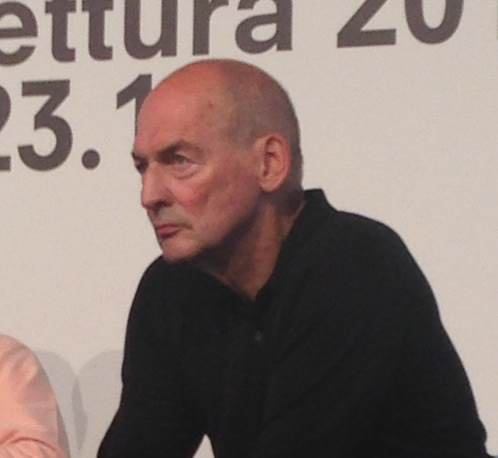It was two in the morning at the Hotel Bauer—the luxuriously lapidary pile on the Grand Canale—and three people were arguing with the concierge. The quarrelsome trio was trying to get upstairs to the room of a friend, a prominent New York City architect whose name it would seem judicious to leave unsaid. “It is impossible,” insisted the calm, somberly dressed sentinel behind the reception desk. “There have been complaints of screaming from up there.”
Blame it on Venice: There’s been so much anticipatory excitement behind this year’s Architecture Biennale that everyone here might be forgiven for needing to blow off a little steam. And by gum, that’s what they were doing—from the jam-packed gardens of the Peggy Guggenheim Foundation, where the American Pavilion celebrated its opening, to the high-ceilinged palazzo where the Russian contingent feted themselves in faintly Amadeus-esque splendor, the first day of the preview had a kind of nervy energy unusual even for the city of the carnivale.
Part of the reason for all the pre-festival excitement has been that this year’s installment is being curated by an architect who, as critic Niklas Maak introduced him in an afternoon panel conversation, is “arguably the most influential theorist and designer of our time”—Rem Koolhaas, Hon. FAIA. Sprinkled in among reflections on technology and the changing urban prospect, the Dutch Dynamo had this to say about the city in which he now finds himself the ringmaster to an unlikely intellectual circus: “Venice is profoundly irrational. It’s illogical to work here, much less live here.”
Seeking, perhaps, to impose some order on all this unreason, Koolhaas adopted the unusual tactic of assigning all the national pavilions a nominal theme, “Absorbing Modernity 1914-2014.” As seen during a brief fly-by visit on opening day, the broad concept allowed the various contributors to take a number of different approaches, from the reconstruction of a mid-century villa in the German Pavilion to a retrospective presentation of 20th-century international aid projects in Africa at the Nordic Pavilion.
Of all the responses to the Koolhaasian challenge, however, the American Pavilion was particularly strong. That isn’t just patriotism speaking: Curated by Eva Franch i Gilabert, Ashley Shafer, and Ana Miljacki, this archival repository of the work of U.S. firms abroad in the last century is often less than flattering to the Land of the Free. “We argue that with this project, the Biennale needs to regain its authority,” Franch says. “I would say that if any revolution consists of bringing large numbers of people together, perhaps we’ve started one, if only a little one.”
This article has been updated to include the name of U.S. Pavilion curators Ashley Shafer and Ana Miljacki.
